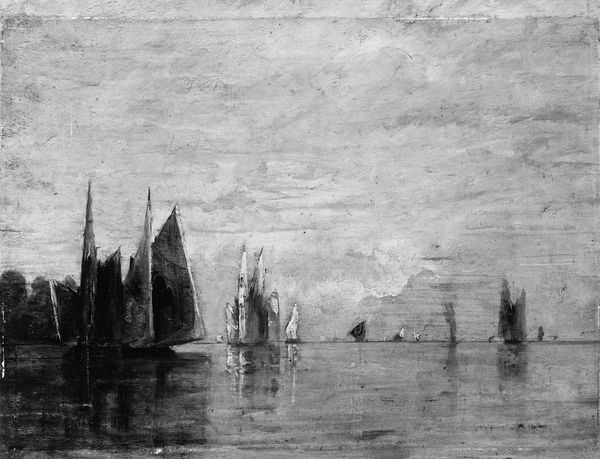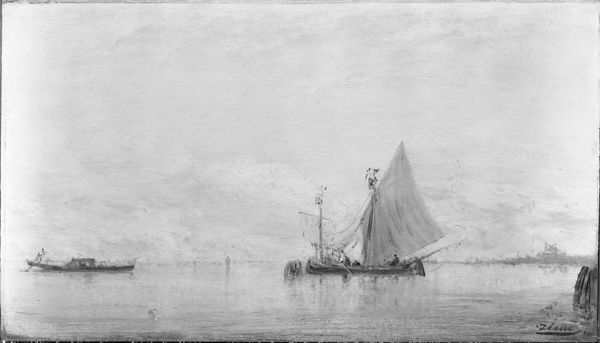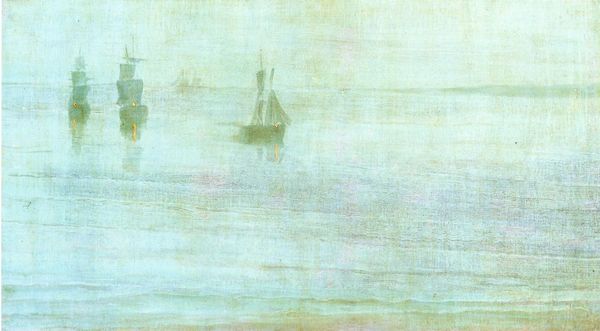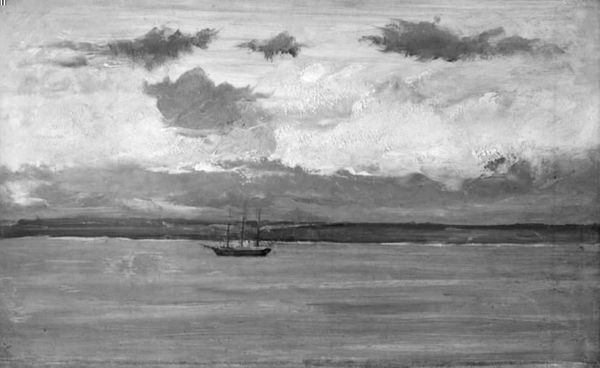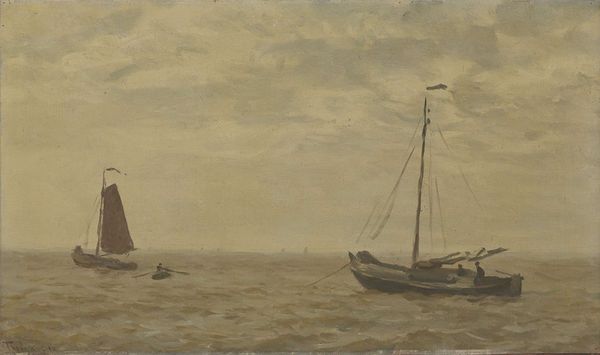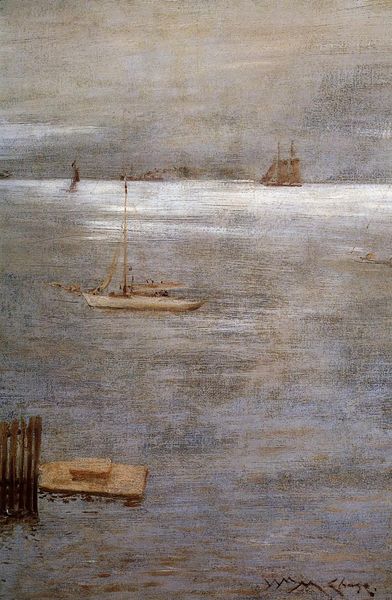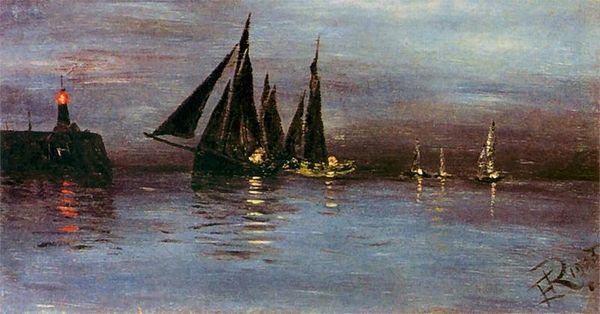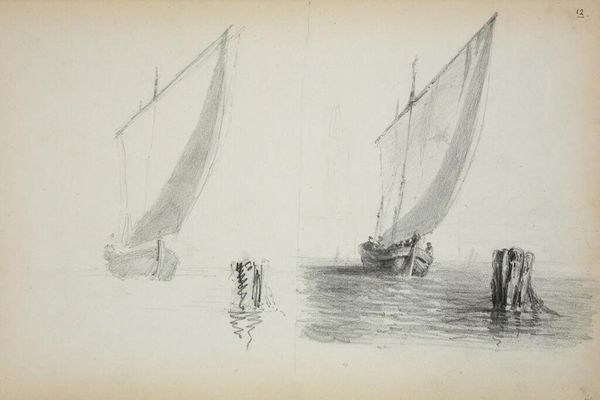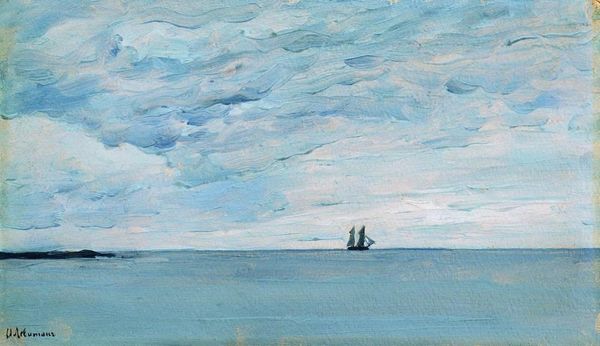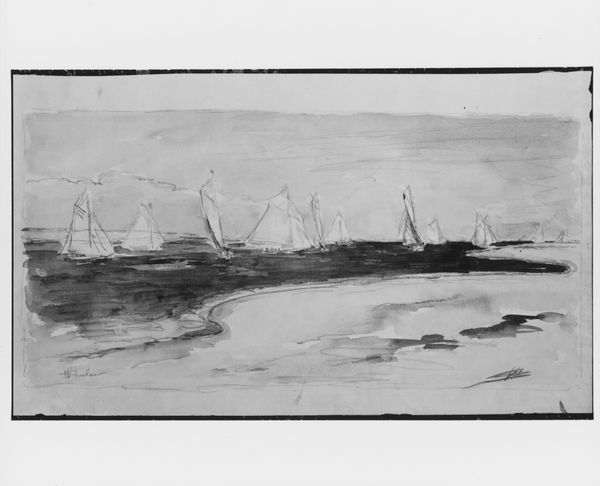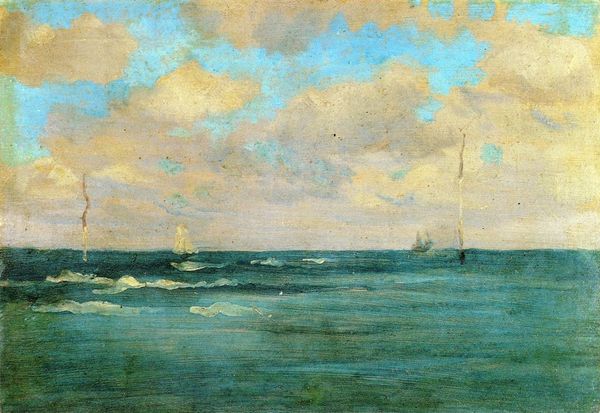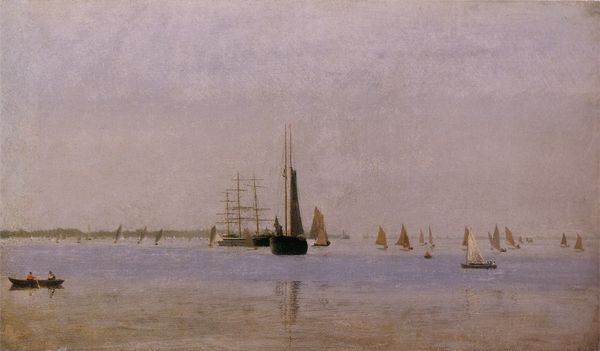
drawing, pencil, charcoal
#
drawing
#
landscape
#
charcoal drawing
#
monochrome colours
#
form
#
pencil
#
hudson-river-school
#
line
#
charcoal
#
charcoal
#
realism
#
monochrome
Copyright: Public domain
Curator: Standing before us is Thomas Eakins's "Study for Ships and Sailboats on the Delaware," created in 1874. A study, in fact, that exemplifies a crucial period in American art history. Editor: My immediate reaction is… melancholic. The monochrome palette and blurred lines create this atmosphere of a muted, almost dreamlike recollection of a landscape. Curator: Indeed. Eakins was working within, and against, the current of the Hudson River School's romantic portrayals of the American landscape. Note his attention to capturing the specific realities of maritime activity on the Delaware River, where shipbuilding was so crucial to American industry. This wasn't just pretty scenery; it was a working river. Editor: Precisely, and the medium – charcoal and pencil on paper, most likely—feels very deliberate. It gives this sketch-like quality. Raw and immediate, not romanticized at all, placing emphasis on process over idealization. You see the means of making, which lends a working-class texture. It suggests, maybe, that ordinary folks might be the main users of the river. Curator: The deliberate roughness mirrors the socio-political context. This piece emerged during a period of profound industrial and social change. The Delaware River, a vital waterway, reflects both opportunity and labor struggles. Consider that these vessels aren't merely picturesque elements. These represent industry, commerce, and the lives dependent on this waterway. Editor: And even the form—it's like he’s grappling with something real, material, with inherent economic and societal implications— the transportation, the exchange of goods and all of those processes seem present through these lines. There are stories of labor woven right into the surface itself, literally! Curator: Certainly. Moreover, Eakins's engagement with the realities of American life contributed to a shift away from earlier artistic conventions, toward the gritty realism that would characterize later works. The Art Students League, for instance, with its promotion of American subject matter. He prepared this cultural movement meticulously. Editor: And, when you consider his realist dedication, one can’t help but wonder—who owned these ships? What did it mean to depict commerce in that time? This picture encourages questions related to the social aspects of industry and invites one to think of making visible working-class endeavors. Curator: This piece offers a critical lens for understanding the developing role of art within American society during a formative time. Editor: A sobering reflection of our history told through line and shade—much appreciated.
Comments
No comments
Be the first to comment and join the conversation on the ultimate creative platform.
